A Middle of the Road German Chef’s Knife with a Nice Look
As far as full-bolster German chef’s knives go, Gude’s Alpha series is mostly what you should expect: It’s heavy and durable and great for rock chopping.
It’s not the finest cutter compared to other German-style knives, but it’s the one I’m most inclined to reach for when faced with anything with a thick rind, or a large cut of meat with the bone still in it. It also stands out the most. I can spot a Gude chef’s knife from a line up at a mile thanks to the giant circle of steel that sticks out from most of their designs.
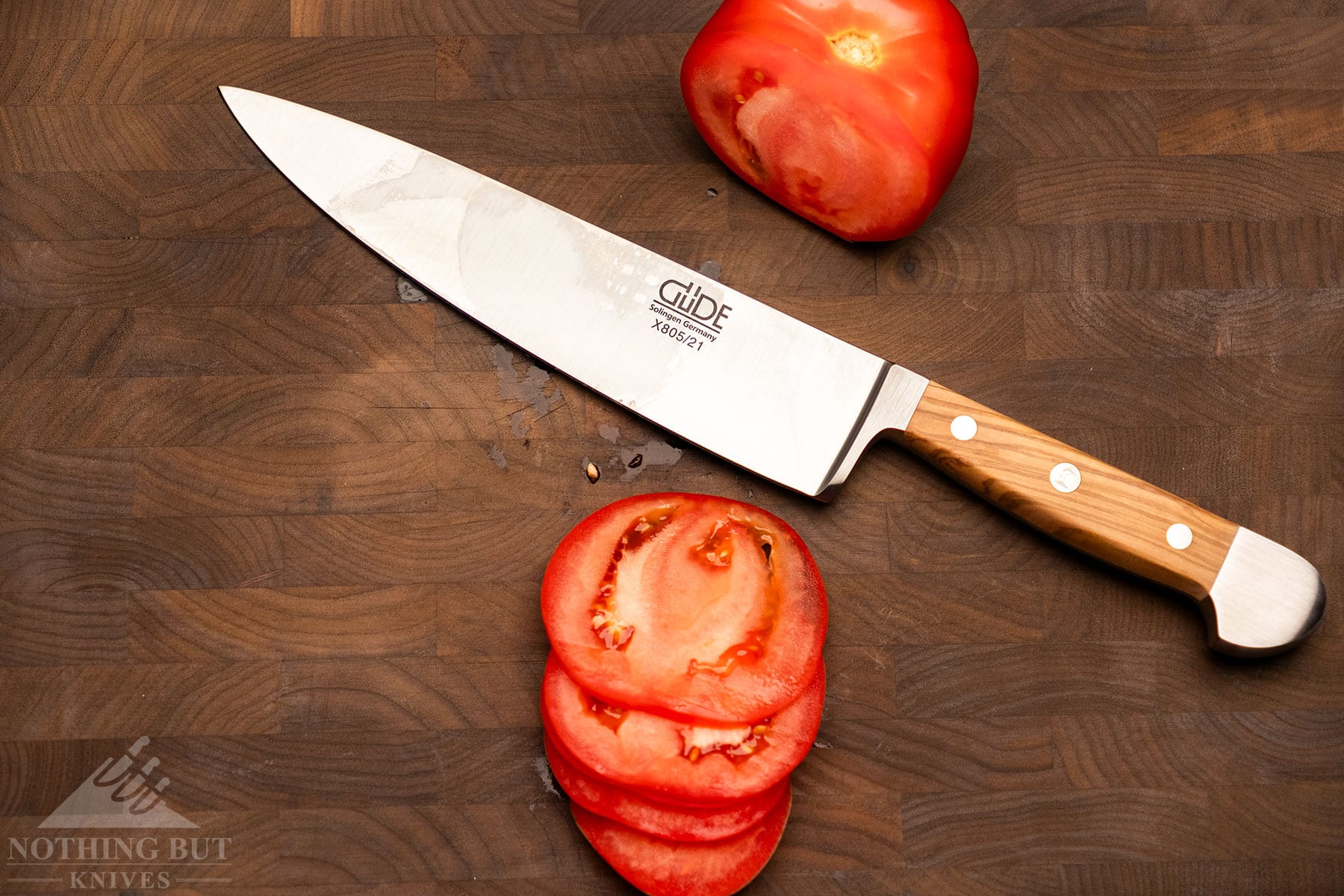
For better or worse, this is one of the heaviest and thickest German chef’s knives I’ve ever reviewed.
Key Takeaways
- This is a tough knife first, and not the most efficient cutter.
- It has a toothy grind on a wide cutting edge.
- The balance heavily favors the pommel.
- The handle is pretty thick but feels nice to grip.
- Great for rough chopping vegetables and cracking open melons and squashes.
Specifications
| Overall Length: | 13.25” |
| Blade Length: | 8.0” |
| Blade Steel: | German stainless |
| Blade Thickness: | 3 mm (1 mm at the tip) |
| Blade Shape: | Western style |
| Blade Grind: | Full flat w/ full bolster |
| Handle Length: | 5.25” (incl. bolster) |
| Handle Material: | Olive wood |
| Weight: | 306.4 g (10.8 oz) |
| Made in: | Solingen, Germany |
| What I Liked | What I Didn’t Like |
|---|---|
| Feels good rock chopping | Full bolster |
| Tough, reliable blade | Sharp spine digs into the fingers |
| Toothy grind makes it easier to start cuts | Way too heavy for my taste |
What’s Güde
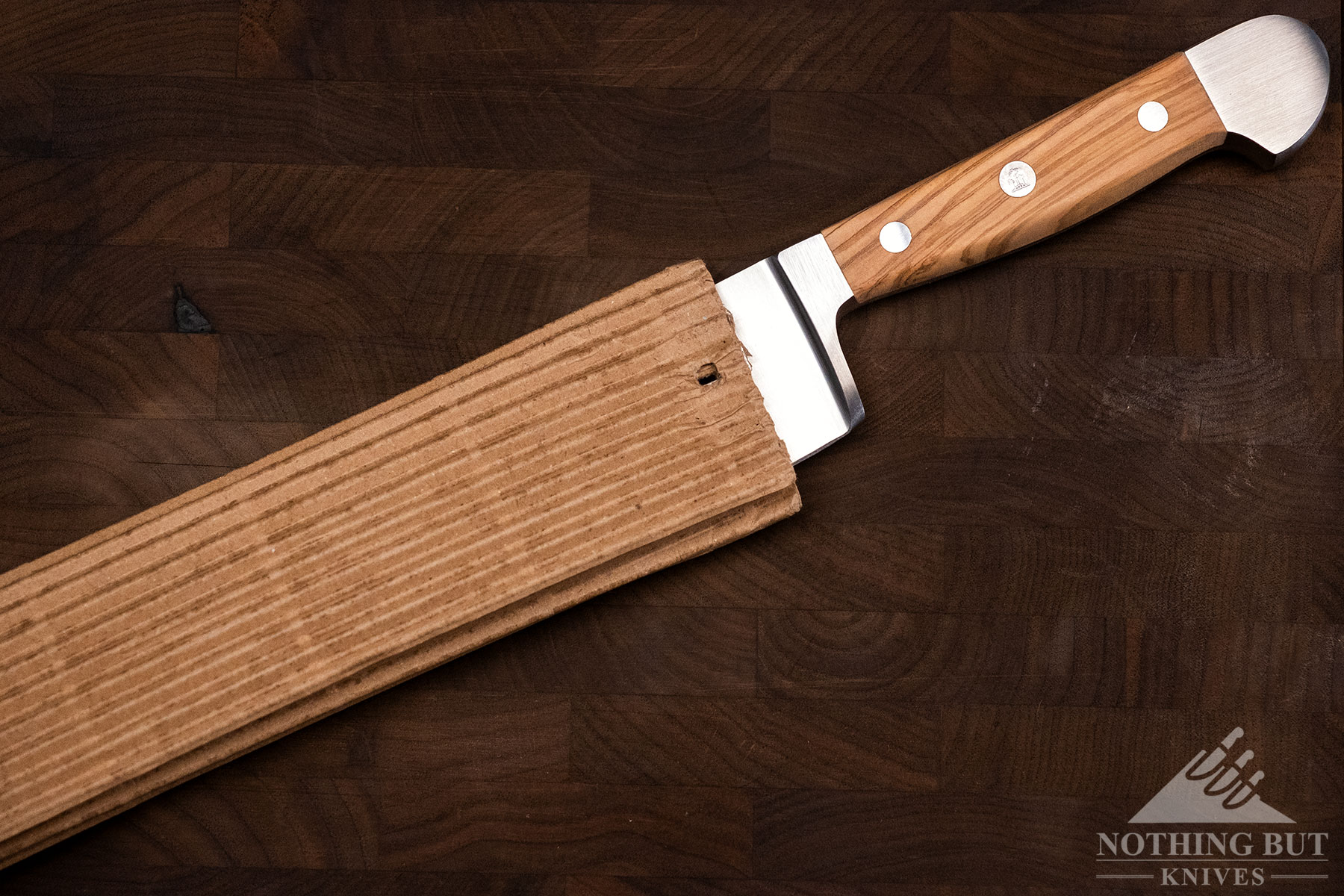
Güde die Messer has been around awhile (and yes, that is the last time you’ll be seeing the proper “u” symbol for their name in this article; I’m not pulling that Insert menu down again).
They’re like a lot of other German cutlery brands that way: starting around the turn of the 20th century in Solingen, Germany, integral to building its reputation as a city of steel, world renown manufacturing, etc. etc.
Gude’s main claim to fame these days is their bread knife. That’s likely because they tend to get their serrations right, and they’re handle design looks interesting and might even be more helpful when it comes to cutting with bread knives.
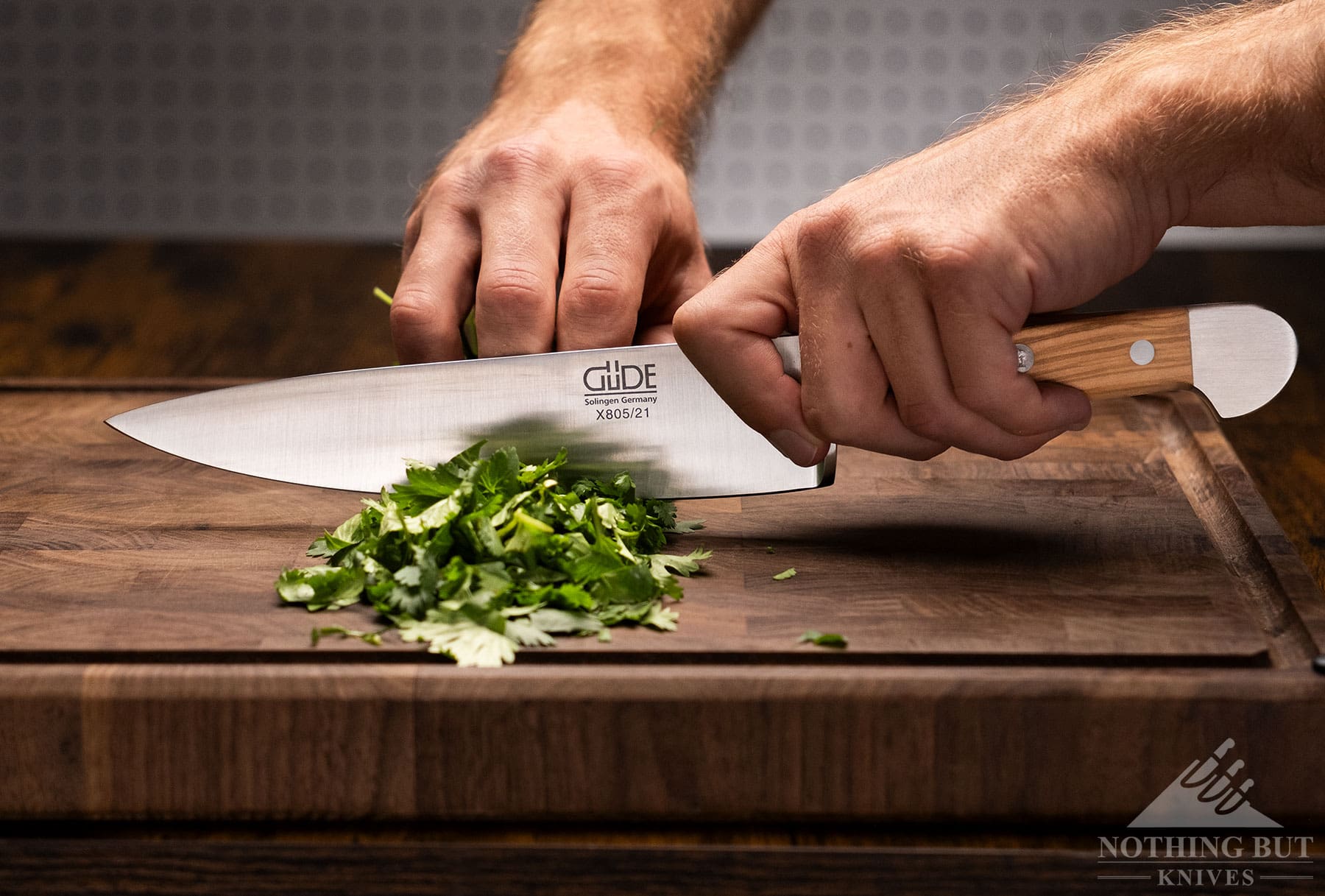
There are a couple things that make them stand out, though. One being that their symbol is a palm tree rather than something much more German like Boker’s Chestnut trees, or Wusthof’s trident, or Zwilling’s weird little people.
I also appreciate the minimalism of their packaging. Maybe it’s a weird thing to like about the company, but we get so many knives that are buried under a pile of stickers, pamphlets, and promotional material that getting a knife that’s just in a slip of cardboard is oddly refreshing.
Handle and Comfort: Great for Rock Chopping, but It Gets Harsh
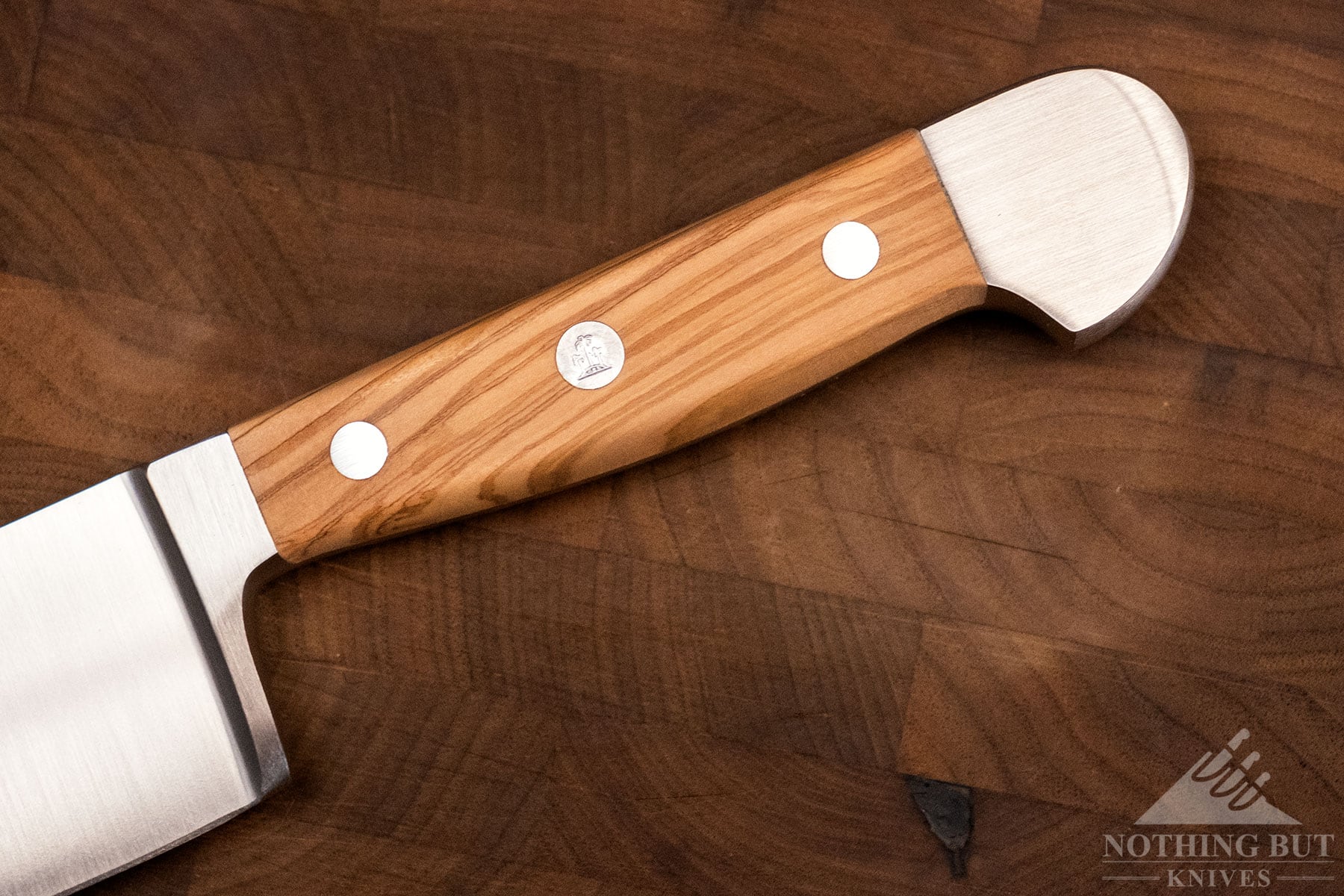
It’s heavy and almost aggressively weighted toward the handle. This thing is unequivocally a rock chopping machine.
The massive pommel adds a lot of weight to the handle in a similar way to the Wusthof Classic Ikon. Except, this having a thicker blade and being significantly heavier overall, it doesn’t have quite the same kind of nimble feeling.
What it does have is an extraordinary sense of weight and power when rock chopping or cutting anything close to the heel of the blade. This is the knife I want to have when I need to bear down into something stubborn.
The Bad: Full Bolster and a Biting Spine
Bearing down has its own issues, because the spine is a little harsh. They’ve tumbled the blade a little, but I still feel the corners biting into my hand pretty bad after a few minutes of cutting an assortment of carrots or onions or anything that required a little extra force on my part (which was a lot, since the edge is pretty thick).
I’m also not a fan of bolsters, but I appreciate that they’ve angled this one away from the cutting edge a little bit. Still, with tough (and therefore soft) steel it’s only a matter of time before the edge gets sharpened behind the bolster and it’ll have to be ground back. Some people like a full bolster either for the grip or because they’ve found some multi-tool purpose for it in the kitchen, but they aren’t my thing.
The Good: Nice Quality, and a Well Done Boxy Handle
The fit and finish here are satisfying. The transitions from tang to handle scale are nearly seamless, and the seams I do feel just add texture to the grip.
The handle is squarish and I can definitely feel the corners when I’m cutting, but not in an uncomfortable way. They mostly just help me grip the knife and adjust the angle of my cut. Part of the reason for that is they’ve got the width just right (for my hands, at least). It’s wide enough that my hand can tighten into the grip easily.
Steel and Blade
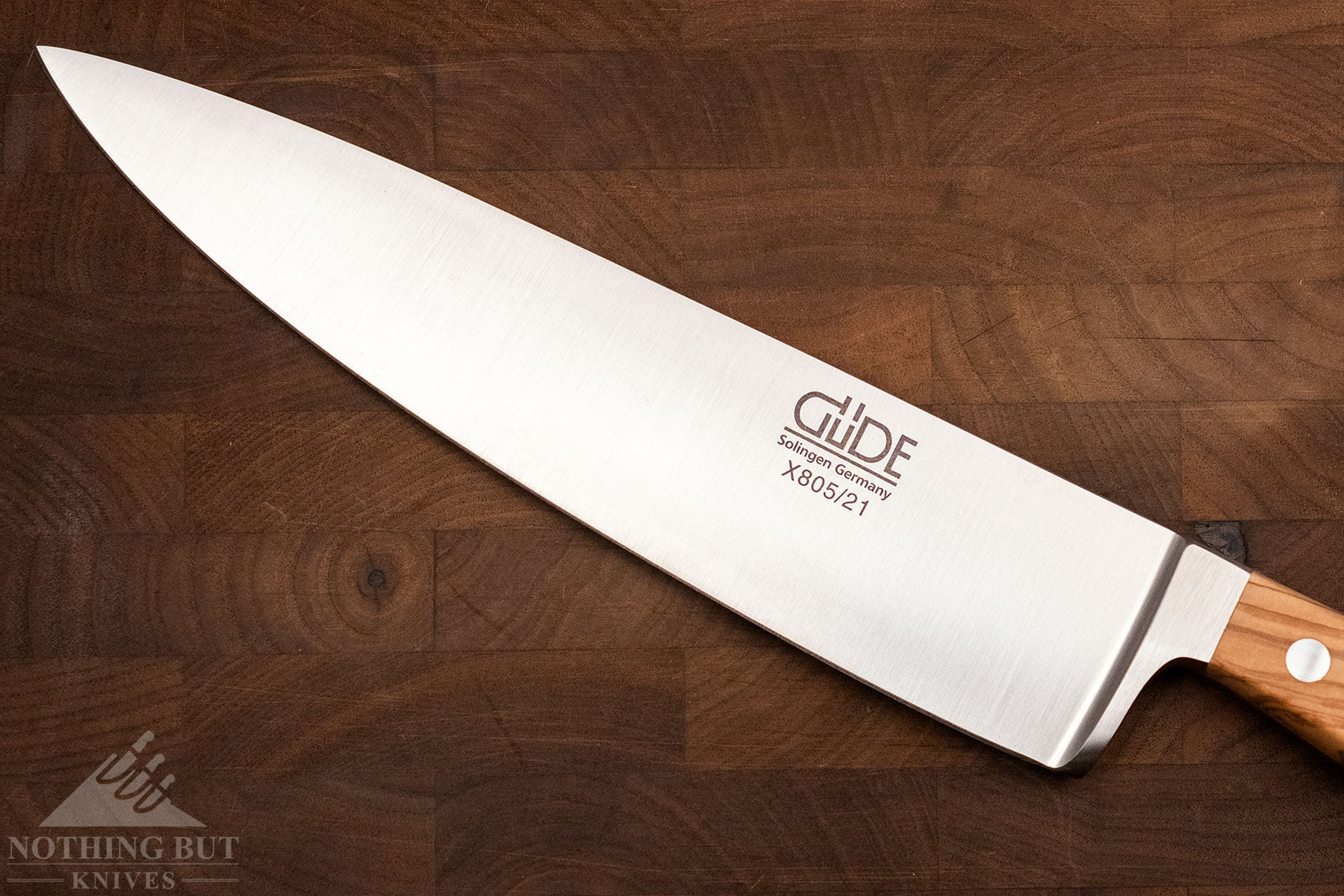
This seems to be built as a tough knife first. The grind feels thick (for a kitchen knife), which can make cutting certain foods feel almost gummy. That also means it has an enormous amount of tensile strength (again, for a kitchen knife).
I’m not sure what steel they’re using. It seems to be roughly equivalent to 1.4116, although it feels like the edge loses its bite a little quicker than some other German knives I’ve used.
I usually advise people to at least hone a German chef’s knife before every use, but I don’t feel that’s as necessary here because of how I tend to use this knife: to crack things open.
Melons, squashes, chickens, turkeys, and any hard vegetables that don’t need to be cut too finely are the optimal range of foods here. When I pick this thing up, I’m not about to de-seed peppers or dice an onion. I’ll rough chop the onion, but otherwise this is a tool of large portions.
Performance
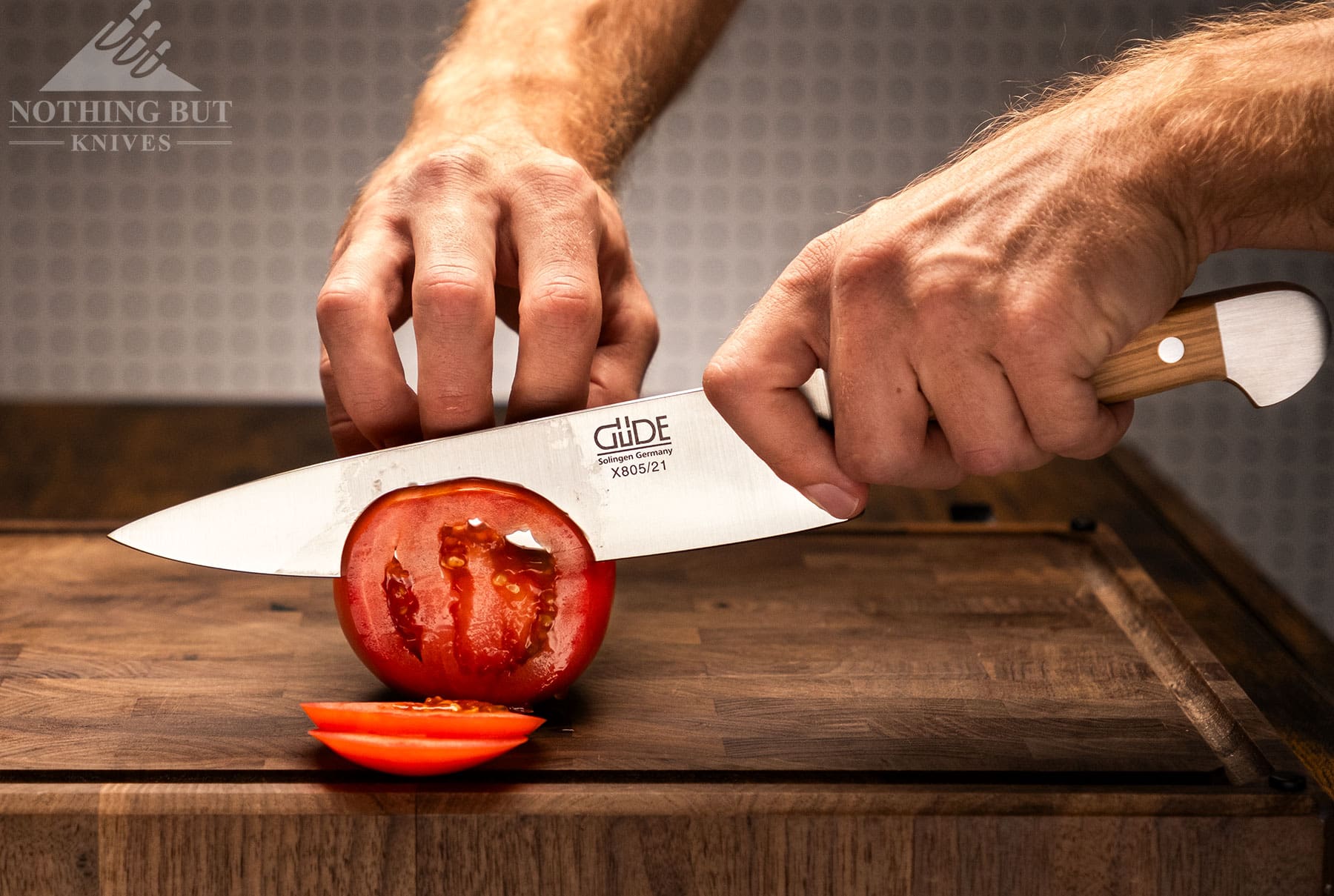
As long as foods have a crisp texture to them (celery, apples, some leafy greens) it cuts cleanly. When I could get myself into a rhythm of rock chopping the weight of the handle pulled me into a sort of trance not all that different from train wheels, and then this turned into an efficient workhorse.
It has a pretty dramatic distal taper going from 3 millimeters at the base of the spine to 1 mm at the tip, but with the way the knife feels overall I never found it very comfortable to cut with the tip anyway.
Carrots and rooty things
I absolutely hate cutting carrots any smaller than a rough chop with this. Julienne cuts feel downright dangerous, because the edge just doesn’t want to bite, and the carrot wants so badly to roll over before I can cut a flat side into it.
It’s much better for rough chopping pieces along the short side of the carrot. The edge bites in fine, and that’s where the rock chopping motion is most helpful.
Meat
If we’re talking cooked meat, it cuts okay, but I wouldn’t want to go at anything too delicate. This is a knife for making stews and soups and things with chunks. So long as your goal is chucks of meat, this will get you there just fine.
Potatoes and Apples
I definitely feel the thickness of the blade when cutting anything with a denser texture. It started cuts fine, but I had to put a little more force into my cuts in order to make them quicker or fluid, which isn’t ideal, but it did well enough.
Comparison and Alternatives
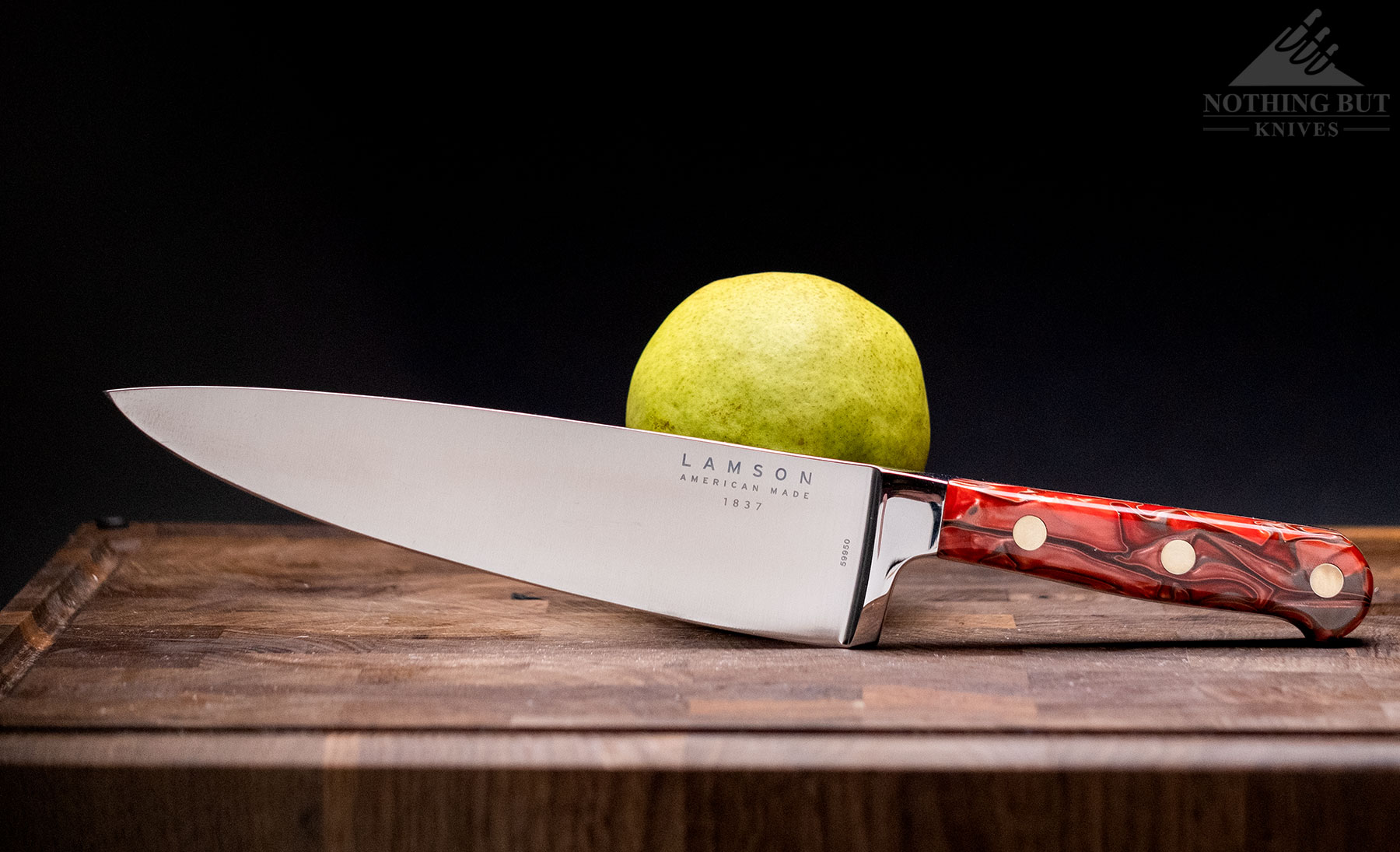
The weight and the handle design are the most distinct elements of the Alpha chef’s knife. Otherwise it cuts within a reasonably close margin to similar designs. Even the price is on average only $20 – 30 more or less than your typical German-made chef’s knife.
So differences are subtle, but here they are:
- The Wusthof Classic Ikon is the closest in terms of weight distribution, but it has a rounded handle and a semi-bolster, so technically nicer for a pinch grip.
- The Zwilling Pro S has the squared handle and full bolster treatment, but is quite a bit lighter.
- The Lamson Premiere Forged is a lot closer in weight, although the balance is closer to the bolster. The handle also has smoother-out square shape that’s incredibly comfortable for larger hands, and a point of pride for the company.
The Most German-y German Chef’s Knife Around
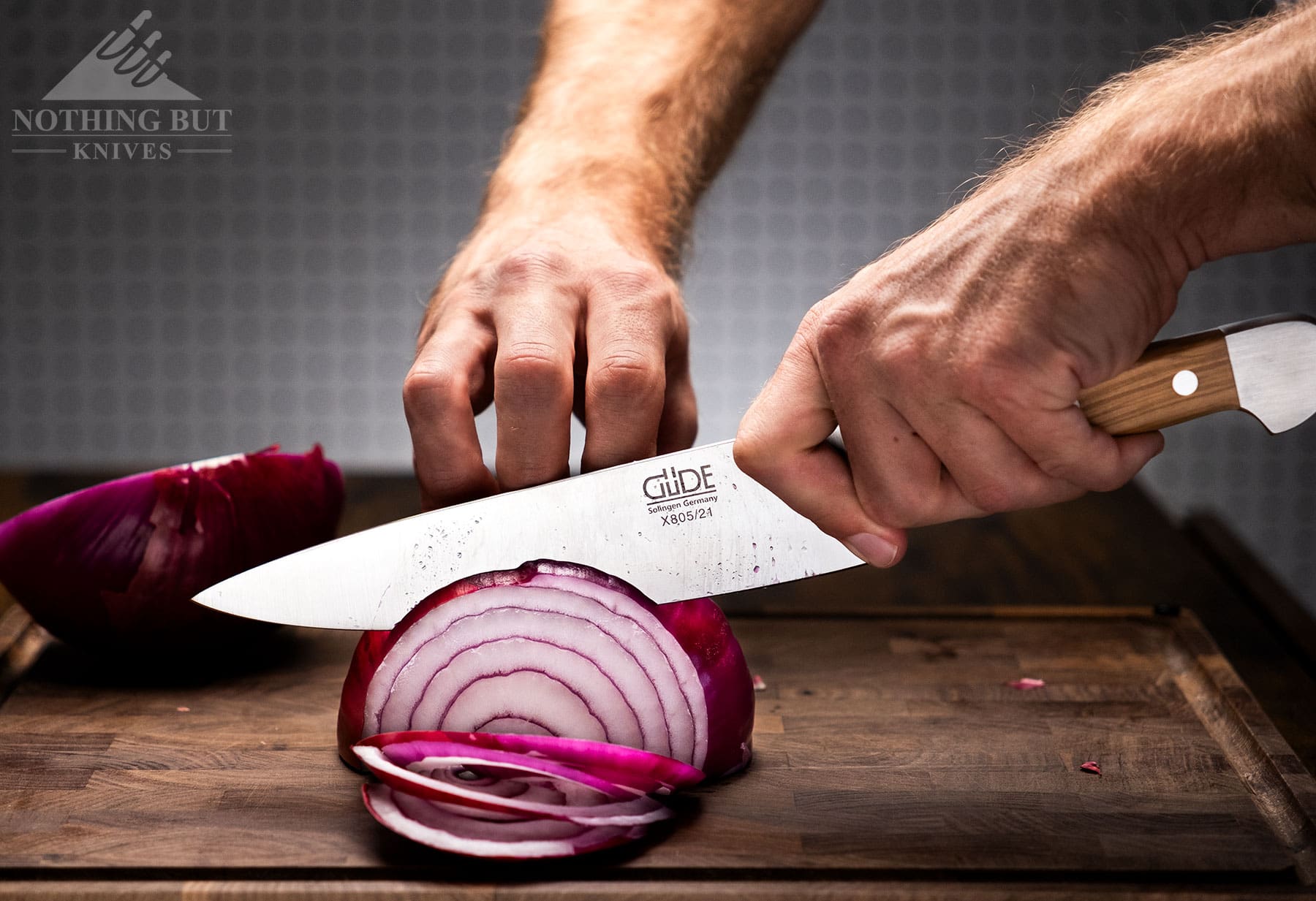
This is a heavy-handled, thick-bladed option in a genre of kitchen knife that is famously heavy in the handle and thick in the blade.
If that’s your thing, you probably won’t find a kitchen knife that’s more of that thing than Gude’s Alpha series. It’s not an efficient cutter, but it is something that was clearly built to last. Gude knows how to make a knife solid. I wouldn’t personally choose this over the Zwilling Pro, but sometimes all you need is a good looking knife that works. That’s what this is. If you like the look, and weight isn’t an issue for you, the Gude Alpha isn’t a bad option.
